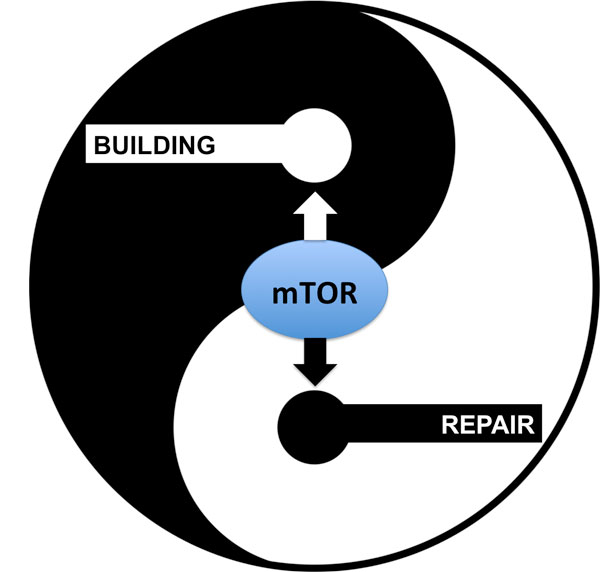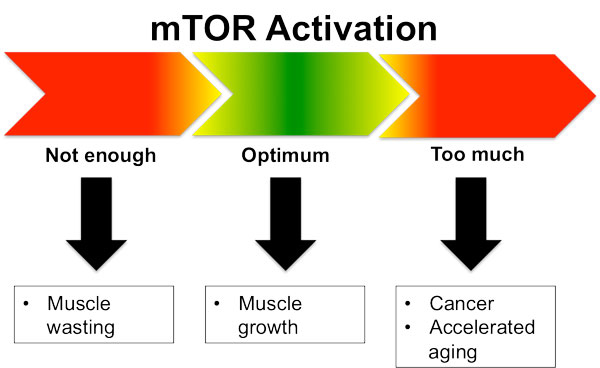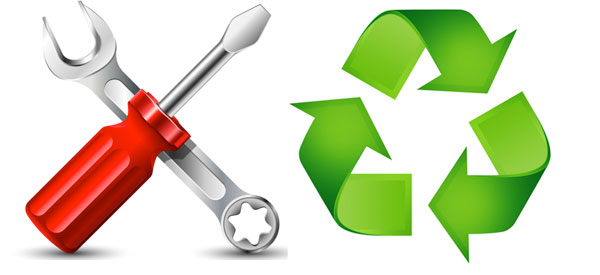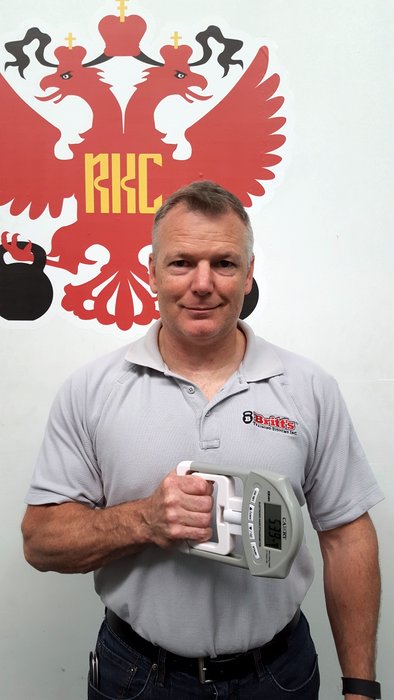
How full is your stress cup? For those that have not read the incredible book, Strong Medicine, the stress cup is a great way to view your overall stress levels. The cup can only hold so much before it overfills and starts to spill. If your cup is running over then you are not able to train effectively and other areas of your life will suffer also.
As Dr. Hardy writes, there are a lot of ways to check on your stress and oxidative inflammation levels. You need to know what your cholesterol is, the levels of associated lipid profiles, and markers of inflammation. If you do not know your levels, you do not know where to go and what your end goal should be. But, you cannot check these numbers on a daily basis. I personally chose to have lab work done about every 4 months or so. That time frame corresponds with the 120 day life cycle of the typical red blood cell. I have found that any changes I have made will be detected and quantifiable in that time frame.
But, you also need to use something that will allow a daily check of your stress cup. A little background before I go any further. My stress cup is pretty full most days. I have three kids, run my gym and training business and I am a full time student in Parker University’s Doctor of Chiropractic program. I leave my house at 5:15am and often return home at 7pm. My days are long, and at 47, tend to be pretty stressful. My school goal is to maintain a 3.2GPA and my current training goal has me training for the Beast Tamer, 48kg kettlebell pistol, press and pullup. I had to find something that would allow me to check my stress level on a daily basis to maximize my training and not add any extra stress or lengthy procedures.
Dr. Hardy spoke about Heart Rate Variability at the Dragon Door Health and Strength Conference as an indicator of the health of our autonomic nervous system. To live the Strong Medicine way we want the parasympathetic nervous system (PNS) to be the main operating system in our daily life. It is the “rest and digest” system. However, in today’s society, the sympathetic nervous system (SNS) is often running at a low volume in the background. The everyday stresses that we allow to affect us keep the SNS pump primed and stress hormones continually trickling into the body. The SNS keeps the stress cup filling all day long and that affects training.
I looked into Heart Rate Variability (HRV) as a method to measure my stress levels for training. A quick, easy explanation of Heart Rate Variability looks at the spacing between heart beats. The more regular the space is between beats, the more the sympathetic nervous system is piloting the ship. You want there to be some variability between beats as that means the parasympathetic nervous system is in charge of everything. The drawback for me was the need to wear a chest strap to measure pulse rate during sleep as HRV is measured upon waking and prior to getting out of bed. It added a little to my stress cup as I did not sleep well with the monitor strap around my chest at night. Sleep is one of my cup fillers that I am working on as it is, but that is for another article.
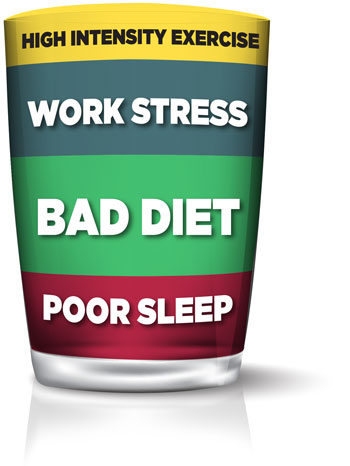 Dr. Hardy mentioned grip strength as a possible tool to measure the stress cup on a daily basis. There are studies that have shown that a decrease in grip strength is correlated with strokes, heart attacks and overall longevity—it made sense that it would also be an indicator of Central Nervous System health. I also liked the fact that it was a quick and easy check that I could do daily before I trained.
Dr. Hardy mentioned grip strength as a possible tool to measure the stress cup on a daily basis. There are studies that have shown that a decrease in grip strength is correlated with strokes, heart attacks and overall longevity—it made sense that it would also be an indicator of Central Nervous System health. I also liked the fact that it was a quick and easy check that I could do daily before I trained.
I did some research on the subject and found some others had used grip strength for the same purpose with pretty good results. What I did not find was a consensus on numbers. Everything I read indicated that you need your baseline number, but everything else was across the board in regards to what constituted having a full stress cup. Dynamometers are pretty cheap online, so I bought one and began to play with it.
My initial baseline was an average of three different readings after two days of rest. I measured, waited five minutes, measured and repeated one more time to develop my numbers. The first training session using the dynamometer was the next day. My grip strength was dead-on my baseline and it was a great session, my press and pistol were really strong that day. I monitored my grip strength on a daily basis while using a program based on Easy Strength to train. My testing procedure is the same every time, I perform it in the same position and close to the same time that I initially tested. I try to keep the outside variables at a minimum. I feel that this is the best way to get an accurate reading.
I found on days that grip strength was at baseline or higher, I had incredible training sessions. In fact on days that it was higher, I was using a 44kg kettlebell for my lifts. But what about those days below the baseline? I tried to push through a few of those days to see what the result would be. The days that I tried to push hard, even though my grip strength was not at baseline, were rough. I did not make my numbers and I would lose a few days of training.
I looked at my daily numbers and came up with a guide that works pretty well.
- Baseline: Green light to train heavy
- 3-5% decrease: Yellow light, medium day
- 6-8% decrease: Light or recovery day
- 10% or more decrease: Take a break and rest
Remember, this is a quick test to determine how full your stress cup is—it is just a piece of the puzzle. You need to know your numbers on blood work, body composition, and determine as many other numbers as possible (such as amount of sleep) to help you maximize your health and avoid overfilling your stress cup.
***
RKC Team Leader Paul Britt has been an RKC kettlebell instructor since 2006. He is currently earning his Doctor of Chiropractic, while still training clients at Britt’s Training Systems, his award-winning Hardstyle Kettlebell Training Facility in Rockwall, Texas. Paul is a Certified Kettlebell Functional Movement Specialist (CK-FMS) and PCC Instructor and has worked with the top Chiropractors in North Texas. Please visit his website brittstrainingsystems.com or Britt’s Training Systems on Facebook for more information.

